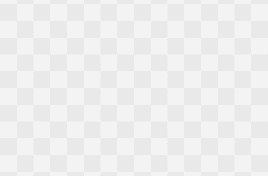Artemis
Project Overview
Artemis is an art exploration app that helps users comprehend and learn artworks through instant recognition, AR, and personalized experiences.
Inspired by the Greek goddess of the hunt, Artemis enhances art appreciation with interactive learning tools and a built-in journal for reflection. Designed for both casual visitors and enthusiasts, it makes art exploration more engaging and insightful.
Observation
Whenever I visit art museums, I notice that most artworks have only a small tag displaying the title, artist, and date, without much detailed information. As a result, I often take photos and look up more information online later. My companions, who come to museums for the immersive experience, often express how hard it is to truly understand the pieces. Even after seeing them in person, their understanding of the art remains limited.
From my observations in art museums, I've noticed that both visitors and learners face a common challenge: they see the artworks but struggle to gain deeper understanding on-site.
This disconnection highlights the needs and pain points of different user groups. Whether casual visitors seeking basic background information or students and researchers wanting deeper insights, current exhibition formats fail to meet these needs.


Target Users
Culture and Art Enthusiasts

“I saw the art, but all I have are photos, left without thought”
Goals:
In-depth information and concise background introduction
Visual-rich content
Interactive experiences
Multiple interpretations
Painpoints:
Lack of interaction
Insufficient or overly complex information
Barriers to understanding
Art Students and Learners

“I came to learn from the masters, but ended up taking photos and rely on search engines”
Goals:
Detailed artwork analysis
Full-dimensional knowledge of artwork
Bookmarking and categorization features
Quick access to related content
Painpoints:
Limited learning resources in museums
Difficulty in accessing academic materials in exhibition

Interviews
“I often don't understand many contemporary art pieces and don't know how to interpret them. Sometimes it feels like a waste of time.”
“I'm interested in these works, but often feel I lack the knowledge to appreciate them, which is a bit frustrating.”
“Sometimes I want to know about the creation techniques, like how certain special painting techniques are achieved.”
“I'd like to know more about the artist's life story to better understand their work.”
“I use my phone to take photos and then use search functions to find related information, which feels a bit cumbersome.”
“Sometimes I use the gallery's guide app or rent an audio guide, but the information isn't deep enough.”
“I want to know more about the social context of the era in which the work was created. It would help me relate better.”
“Sometimes the information plaques for exhibits are too small or contain too little information. I want to know more but don't want to constantly search on my browsers and disrupt my visiting experience”
“I feel confused. I usually stand in front of the piece for a while and then quickly move on to look at something else.”
Painpoints
Difficulty Understanding Complex Artworks
Users struggle to comprehend, conceptual, and intricate artworks due to insufficient background knowledge.
Design & Prototyping
From my observations in art museums, I've noticed that both visitors and learners face a common challenge: they see the artworks but struggle to gain deeper understanding on-site.
Implementation
This disconnection highlights the needs and pain points of different user groups. Whether casual visitors seeking basic background information or students and researchers wanting deeper insights, current exhibition formats fail to meet these needs.
Testing & Optimization
Conducted rigorous testing across various devices and platforms to ensure compatibility and performance. Gathered user feedback through beta testing and iteratively optimized the app based on usability metrics and user satisfaction.
Persona
Tommy Wang
Age: 20
Hometown: New York City
Occupation: Fine Arts College Student
Education: Junior, majoring in Art History
Tommy moved quickly through MoMa in New York City, photographing works for his project on "Post Impressionism". He hastily took multiple photos for those masterpieces and their details. However, he realized he hadn't truly observed or reflected on the work. Back in his dorm, facing numerous photos on his phone, Tommy spent time re-searching artwork information. He wished for a tool to help him analyze works deeply while viewing and give directions to related artworks, styles, or movements, seamlessly integrating exhibition visits with his research.
Brief Story
Systematically learn and organize art knowledge
Disconnect between exhibition experience and learning process, difficult to study in-depth on-site
Gain deep artistic insights during exhibition visits
Time-consuming and laborious to organize numerous photos taken at exhibitions
Efficiently collect and organize exhibition information for study and creation
Challenging to record personal thoughts and professional analysis simultaneously during visits
Frustrations
Goals
"I long to deeply understand every artwork, but viewing exhibitions and studying always feel disconnected."

Age: 32
Hometown: Chicago, Illinois
Occupation: Marketing Manager
Education: Bachelor's in Business Administration
Lydia Davis
Lydia stood before an abstract painting titled "Untitled #7" in a modern art exhibition. The artwork consisted of large blocks of blue and red with intersecting geometric shapes. She struggled to understand it, finding the exhibition description obscure. Searching on her phone yielded cluttered results hard to read in the gallery lighting. Leaving, Lydia felt she might have missed the painting's deeper meaning, wishing for a way to instantly access easy-to-understand art interpretations.
Brief Story
Understand and appreciate art pieces
Difficulty understanding abstract and conceptual modern artworks
Efficiently visit art exhibitions despite a busy work life
Lack of background knowledge to fully appreciate art pieces
Improve her art appreciation skills
Inability to instantly access detailed artwork information in the gallery environment
Goals
Frustrations
"I love art, but sometimes art feels like a puzzle I can't solve."

User Journey Map
Pre-Visit Planning
Arrival at Gallery
Viewing Artworks
Documenting and Searching
Research exhibitions
Plan visit schedule
Enter the gallery
Get oriented
Observe artworks
Read artwork labels
Take photos
Search on line
"Which exhibitions are worth my time?"
"How can I make the most of my visit?"
"Where should I start?"
"How can I navigate efficiently?"
"What does this artwork mean?"
"How was this created?"
What is the art style and its feature?
I want to know its background
"How can I remember all this information?"
"What aspects should I focus on for my studies/appreciation?"
Difficulty finding comprehensive exhibition information
Unsure how to prioritize artworks
Difficulty navigating large galleries
Overwhelmed by the number of artworks
Difficulty understanding abstract or complex artworks
Limited information on exhibition
Difficulty balancing between experiencing art and documenting it
Overwhelmed by the information and
Provide a curated list of exhibitions with detailed information
Offer personalized artwork recommendations based on user interests
Implement AR navigation within the app
Provide a virtual tour guide feature
Use AR to overlay additional information on artworks
Provide interactive elements to explain artistic techniques
Use AR to overlay additional information on artworks
Provide a curated, verified information database within the app








Stage
Actions
think
Tasks
Degree of Pain
Emotion
Opportunity
Find information about current exhibitions
Decide which artworks to focus on
Locate specific artworks
Understand the layout of the exhibition
Understand the meaning behind artworks
Learn more about this artwork
Capture details for later reference
Research on more detailed information about the artworks
Competitive Audit
Affinity Diagram
Personalization Feeds
"I hope the app can recommend artworks and exhibitions based on my interests."
"Where should I start?” “How can I navigate efficiently?”
Artwork info accessbility
Difficulty accessing detailed and relevant information during gallery visits.
Reliance on external devices disrupts the experience.
"I want to quickly identify artworks and access relevant information."
Provide a curated, verified information database within the app
Understanding Abstract Art
Struggle to interpret abstract or modern art due to lack of background knowledge.
"I'd like to understand the artwork's context and the artist's intentions."
Exhibition information
"I want to know about current and upcoming exhibitions in advance."
“I want to know where my favorite artworks are located.”
“How can I make the most of my visit?”
Knowledge Collection
Seamlessly capture, organize, and revisit insights from visits.
The cumbersome process of organizing notes and photos post-visit.
Easy access to related artworks, styles, or movements.
Pre-visiting
Visiting
Post-visiting
User Flow

Sketch & Wireframes
Explore Artwork
Filter/Search
New Feeds
Exhibition
Exhibition
Museum
Museum
Museum
Events
Explore Exhibitions
Filter/Search
New Feeds
Museums
Explore Exhibitions
Filter/Search
Popular
MuseumMap
AR
Color palette
Artist
Time
Museum
Movement
Material
Title
Me
AR
Introduction
Stories
Appreciation
AR
Related Arts
Artist
History
Artist
Artist Artworks
Related Figures
Arts
Artist
Museum
Time
Movement
Title
Color palette
Artist
Timeline
Introduction
My Saved
Saved Art Movement
Saved Artists
Saved Artworks
Saved Artists
Filter/Sort
Movement/Period
Movement/Period
Saved Artworks
Movement/Period
Filter/Sort
Movement/Period
Movement/Period
Color Palette
Search

Mona Lisa
About
Artist
Leonardo Da Vinci
1505-1506
Time
Movement
Movement
Movement
Movement
Movement
Color Palette
Renaissance
Renaissance
Renaissance
Renaissance
Renaissance
Mona Lisa is a half-length portrait painting by Italian artist Leonardo da Vinci. Considered an archetypal masterpiece of the Italian Renaissance, it has been described as "the best known, the most visited, the most written about, the most sung about, the most parodied work of art in the world". The painting's novel qualities include the subject's enigmatic expression, monumentality of the composition

Da Vinci is widely known as one of the most influential figures of the Renaissance, excelling in multiple fields such as art, science, and engineering. Born in 1452 in Italy, Leonardo da Vinci is famous for iconic works like the "Mona Lisa" and "The Last Supper."

About
Leonardo Da Vinci
1505-1506
Rome, Italy
Rome, Italy
Movement
Movement
Movement
Renaissance
Renaissance
Renaissance
Timeline

Mona Lisa
Leonardo Da Vinci
1505-1506
Renaissance


Artist
Da Vinci is widely known as one of the most influential figures of the Renaissance, excelling in multiple fields such as art, science, and engineering. Born in 1452 in Italy, Leonardo da Vinci is famous for iconic works like the "Mona Lisa" and "The Last Supper."
His notebooks reveal a deep curiosity and keen observations about anatomy, mechanics, and nature. Da Vinci's inventions and scientific studies, although ahead of his time, were rarely completed. He is remembered as the archetype of the "Renaissance Man," embodying creativity, intelligence, and innovation across disciplines.

Background
Da Vinci is widely known as one of the most influential figures of the Renaissance, excelling in multiple fields such as art, science, and engineering. Born in 1452 in Italy, Leonardo da Vinci is famous for iconic works like the "Mona Lisa" and "The Last Supper."
His notebooks reveal a deep curiosity and keen observations about anatomy, mechanics, and nature. Da Vinci's inventions and scientific studies, although ahead of his time, were rarely completed. He is remembered as the archetype of the "Renaissance Man," embodying creativity, intelligence, and innovation across disciplines.

Leonardo Da Vinci
1505-1506
Renaissance

Artist
Da Vinci is widely known as one of the most influential figures of the Renaissance, excelling in multiple fields such as art, science, and engineering. Born in 1452 in Italy, Leonardo da Vinci is famous for iconic works like the "Mona Lisa" and "The Last Supper."







Artworks
See All
Timeline


Background
Da Vinci is widely known as one of the most influential figures of the Renaissance, excelling in multiple fields such as art, science, and engineering. Born in 1452 in Italy, Leonardo da Vinci is famous for iconic works like the "Mona Lisa" and "The Last Supper."
His notebooks reveal a deep curiosity and keen observations about anatomy, mechanics, and nature. Da Vinci's inventions and scientific studies, although ahead of his time, were rarely completed. He is remembered as the archetype of the "Renaissance Man," embodying creativity, intelligence, and innovation across disciplines.

Story
Da Vinci is widely known as one of the most influential figures of the Renaissance, excelling in multiple fields such as art, science, and engineering. Born in 1452 in Italy, Leonardo da Vinci is famous for iconic works like the "Mona Lisa" and "The Last Supper."
His notebooks reveal a deep curiosity and keen observations about anatomy, mechanics, and nature. Da Vinci's inventions and scientific studies, although ahead of his time, were rarely completed. He is remembered as the archetype of the "Renaissance Man," embodying creativity, intelligence, and innovation across disciplines.



Related Artists
Related Artists
Related Artists

Related Artists
Related Artists

Leonardo Da Vinci
1505-1506
Renaissance

Artist
Da Vinci is widely known as one of the most influential figures of the Renaissance, excelling in multiple fields such as art, science, and engineering. Born in 1452 in Italy, Leonardo da Vinci is famous for iconic works like the "Mona Lisa" and "The Last Supper."
His notebooks reveal a deep curiosity and keen observations about anatomy, mechanics, and nature. Da Vinci's inventions and scientific studies, although ahead of his time, were rarely completed. He is remembered as the archetype of the "Renaissance Man," embodying creativity, intelligence, and innovation across disciplines.

Background
Da Vinci is widely known as one of the most influential figures of the Renaissance, excelling in multiple fields such as art, science, and engineering. Born in 1452 in Italy, Leonardo da Vinci is famous for iconic works like the "Mona Lisa" and "The Last Supper."
His notebooks reveal a deep curiosity and keen observations about anatomy, mechanics, and nature. Da Vinci's inventions and scientific studies, although ahead of his time, were rarely completed. He is remembered as the archetype of the "Renaissance Man," embodying creativity, intelligence, and innovation across disciplines.
Mona Lisa
Leonardo Da Vinci
1505-1506
Renaissance


Appreciation
Related Artists
Da Vinci is widely known as one of the most influential figures of the Renaissance, excelling in multiple fields such as art, science, and engineering. Born in 1452 in Italy, Leonardo da Vinci is famous for iconic works like the "Mona Lisa" and "The Last Supper."



Related Artists
Related Artists
Related Artists

Related Artists
AR Mode

Mona Lisa
Leonardo Da Vinci
1505-1506
Time
Movement
Movement
Movement
Movement
Movement
Color Palette
Renaissance
Renaissance
Renaissance
Renaissance
Renaissance
Color Palette







Explore Artwork








Genres








Saved








Artwork
Artist
Exhibition
Museum
Explore Artwork



Related Artists
Related Artists
Related Artists



Related Artists
Related Artists
Related Artists




Related Artists
Related Artists
Related Artists
Related Artists
Artwork
Artist
Exhibition
Museum
Explore Artwork

The British Museum
London

The British Museum
London

The British Museum
London
Artwork
Artist
Exhibition
Museum
Explore Artwork

The British Museum
Lorem ipsum dolor sit amet, consectetur adipiscing elit

The British Museum
Lorem ipsum dolor sit amet, consectetur adipiscing elit

The British Museum
Lorem ipsum dolor sit amet, consectetur adipiscing elit
Artwork
Artist
Exhibition
Museum
Explore Museum

The British Museum
London

The British Museum
London

The British Museum
London
Explore Exhibition

The British Museum
Lorem ipsum dolor sit amet, consectetur adipiscing elit

The British Museum
Lorem ipsum dolor sit amet, consectetur adipiscing elit

The British Museum
Lorem ipsum dolor sit amet, consectetur adipiscing elit
Sort by
Sketch & Wireframes





